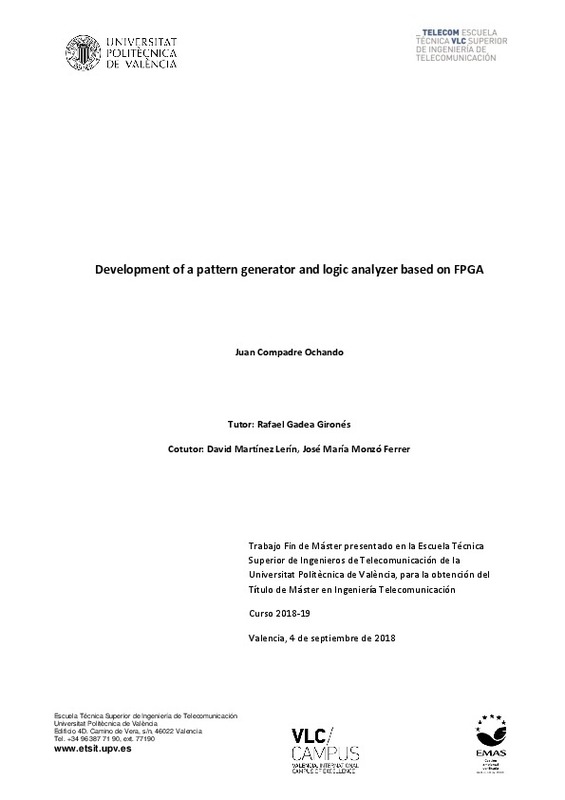- RiuNet repositorio UPV
- :
- Docencia
- :
- Trabajos académicos
- :
- ETSIT - Trabajos académicos
- :
- Ver ítem
JavaScript is disabled for your browser. Some features of this site may not work without it.
Buscar en RiuNet
Listar
Mi cuenta
Estadísticas
Ayuda RiuNet
Admin. UPV
Desde el lunes 3 y hasta el jueves 20 de marzo, RiuNet funcionará en modo de solo lectura a causa de su actualización a una nueva versión.
Desarrollo de un generador de patrones y analizador lógico basado en FPGA
Mostrar el registro completo del ítem
Compadre Ochando, J. (2019). Desarrollo de un generador de patrones y analizador lógico basado en FPGA. http://hdl.handle.net/10251/127833
Por favor, use este identificador para citar o enlazar este ítem: http://hdl.handle.net/10251/127833
Ficheros en el ítem
Metadatos del ítem
| Título: | Desarrollo de un generador de patrones y analizador lógico basado en FPGA | |||
| Autor: | Compadre Ochando, Juan | |||
| Director(es): | Martínez Lerín, David | |||
| Entidad UPV: |
|
|||
| Fecha acto/lectura: |
|
|||
| Resumen: |
[ES] En la evaluación de distintos chips es necesario generar patrones en sus señales de entrada y comprobar que las de salida sean correctas. Estos patrones deben cubrir todas las posibilidades del chip para asegurar su ...[+]
[EN] In the evaluation of different chips it is necessary to generate patterns in their input signals and check that the output signals are correct. These patterns must cover all the possibilities of the chip to ensure its ...[+]
|
|||
| Palabras clave: |
|
|||
| Derechos de uso: | Reserva de todos los derechos | |||
| Editorial: |
|
|||
| Titulación: |
|
|||
| Tipo: |
|
recommendations
Este ítem aparece en la(s) siguiente(s) colección(ones)
-
ETSIT - Trabajos académicos [2432]
Escuela Técnica Superior de Ingenieros de Telecomunicación







